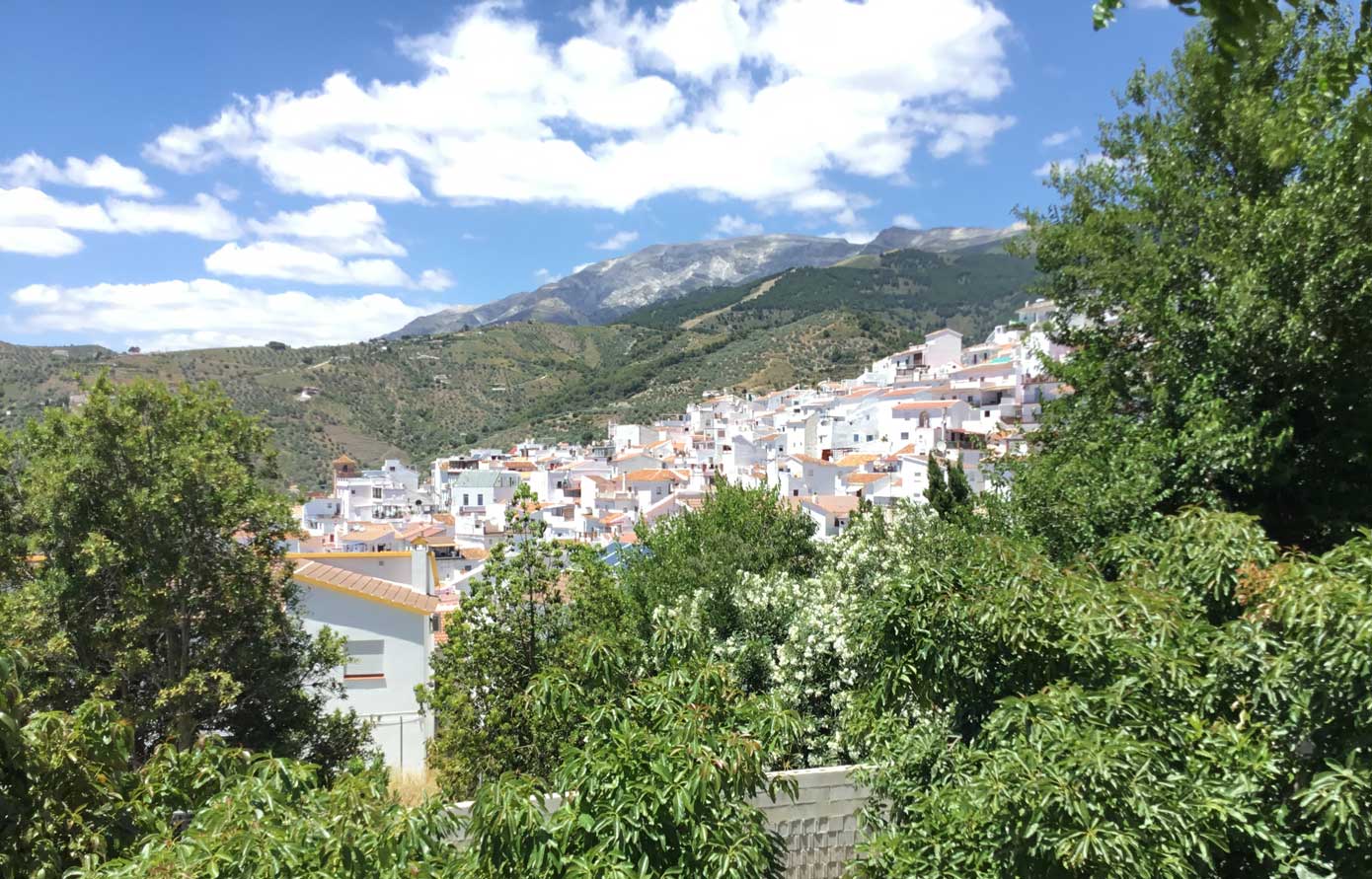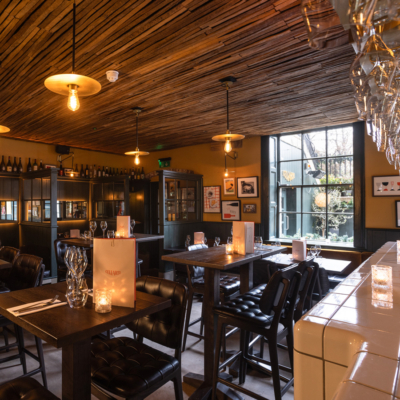Irish barrister and writer Henry Murphy describes his love of late onset adventures …
With the exception of a year as a volunteer teacher in a school near Calcutta in 1971/2, I was never much of an adventurer. To be fair, maybe I packed my adventure allowance into that year. Not long after my arrival, India and Pakistan went to war and not long after that Bangladesh was born. The nearest I got to the war was football and rum with Sikh soldiers who had taken over the school as part of the war effort. No medals there.
For the next 25 years or so after my return, adventure consisted of wonderful family holidays up and down the West Coast … of Ireland, long before it became the Wild Atlantic Way. I have to say that my favourite places in the world are home from home in and around Carrigart in Donegal and the exquisite Killary Harbour up which fjord Queen Victoria sped in 1901. Not that that is of particular relevance.
In the nineties, we discovered the Spanish Interior, not in the same sense that Columbus discovered South America. One fortnight brought us to the necklace of jewels around Madrid. Another, we took the Ave from Atocha Station Madrid, to Córdoba, hired a car and drove a circuitous route ending up in La Mancha and finally back to the capital. As I write, I realise that this was the time the seed was sown. The seed that brought us back to where we now live.
Recently, I marked 40 years with the law and after a little reflection decided that enough was enough. It was time for a change of everything. Hand in hand with the reflection was the thought that I would try a novel. Not to read. To write. I had written a few collections of short stories which I was lucky to get published. That was the late nineties. At the time my publisher asked if I had a novel in me. What’s wrong with short stories I asked him back. “They don’t sell”, he said.
So recently, my wife and I decided to make a move. We would go away for a year and I could have a go at my novel and we would take it from there. No longterm or permanent decisions immediately. Poco a poco. My Spanish was improving already. She went online and very quickly found a house and a village that seemed to meet our needs. A few months later we were on our way. It wasn’t Patagonia or North Korea but it was adventure by our standards.
We arrived at Malaga airport, got the coastal train to Malaga Bus Station and then the bus to Canillas de Albaida, our village in the mountains of Andalucia, on the unfashionable side of Malaga. The journey took two hours, half of which was up a perilous zig zag road during which I wondered which was more likely to happen first – a head on collision with an oncoming vehicle as we went around a bend that wasn’t constructed for two vehicles, particularly if one was a bus, or a tumble over the edge of the road and down the side of the mountain.
In a word or more accurately five, we fell on our feet. Everything about the village and our house was perfect, including landlords who couldn’t do enough for us. We knew immediately. So much so, that while we were keeping our options open in relation to how long we might stay and whether or not we would move on, we very quickly came to the conclusion that it might be unwise to move elsewhere in case we weren’t as lucky. Our spirit of adventure had limitations.
One of the local gems is the Lost Village of El Acebuchal. It’s about a half an hour from our village. By car, but of course, if you’re a walker, you can walk there. There is a back and a front entrance to the Lost Village and if you are walking, or if you have a car and your car is up to it, make sure to take the back entrance. That way you get a good idea of just how “Lost” the village is. It’s not a road. It’s not even much of a track. It is narrow, stoney and pot-holed. It’s twisty and rising with a sheer drop on my side. To be honest, I wasn’t mad about the driving part of the excursion. As our companion who was introducing us to the Village said, “There is another, not a great, road, but this sort of sets the scene”.
When we visited, we did a short tour which didn’t take very long. It’s a very small place. I could see immediately that it would be perfect for an artist or, dare I say it, someone trying to write a novel.
After a glorious lunch of venison stew and a bottle of the local red, Antonio the owner of the restaurant, joined us. Antonio is something of a missionary in relation to the village and likes to share the history of it. The tiny village lies in the foothills of the Tejeda and Almijara National Park. Until 1949 Acebuchal was a poor village whose inhabitants produced charcoal and limestone and kept some animals. It was also a resting point for merchants from the coast and nearby towns who were on their way to Granada to sell or exchange their fish, vegetables and fruit which were laden on the backs of mules. This way of life had not changed for hundreds of years. No roads. No electricity. No plumbing.
In 1949, Franco forced the population of Acebuchal to move out so that the Guardia Civil could move in and use the location as a base to hunt down the guerrillas in the mountains who were continuing to oppose the fascist regime. Over time the village fell into ruin and this was the way it stayed until Antonio, a former resident, took the initiative to renovate the village. The first house was completed in 1998 and after seven years the project was complete. Now, most of the village has been restored but there are still a few ruined houses.
Despite what my nephew says about the absence of things happening in our village, there are many things worth writing about and many I have covered in my novel. One stands out perhaps; the annual Feria. July and August are devoted to Feria. Each village hosts one in July or August so you can easily spend these months moving from one Feria to another. At least at weekends. From a practical point of view, these are difficult months in which to get anything done.
Feria lasts three nights and three days with the emphasis heavily on the nights. In our village, the first weekend in August. Day 1 Friday, at nine in the morning, the municipal band tours the village announcing the commencement of Feria. Entirely unnecessary as everyone in the village already knows. On Saturday and Sunday the band will return at a slightly later hour to remind the villagers of the continuation of Feria. Again entirely unnecessary. But delightful.
On each of the three days, there are activities for all villagers and every member of the family. The highlight, La Fiesta de la Espuma! The Foam Party! Saturday afternoon in the plaza. A machine that looks as if it is going to spit out tennis balls spits out foam instead. Snowballs of foam. In minutes the plaza is transformed into a bubble bath of foam. The DJ is belting out the music. An electrifying beat, the foam, the scorching sun. First the children. Then the adults, normal, normally sane, adults. We walk into the foam in our clothes without a thought and dance our hearts out in the blazing sun of a high summer afternoon in the Andalucian mountains.
There will be none of that this summer.
Each of the three nights, according to the programme, the music and dancing will begin at 10.30 but no Spaniard worth his or her salt will show before midnight. Or leave before six in the morning. And that includes the senior members of the village down to the very young in their mothers arms. I don’t know how they do it.

Tilting At Windmills, A Spanish Year Chasing A Novel Dream, by Henry Murphy published by Orphen Press is out now.
LOVETHEGLOSS.IE?
Sign up to our MAILING LIST now for a roundup of the latest fashion, beauty, interiors and entertaining news from THE GLOSS MAGAZINE’s daily dispatches.









